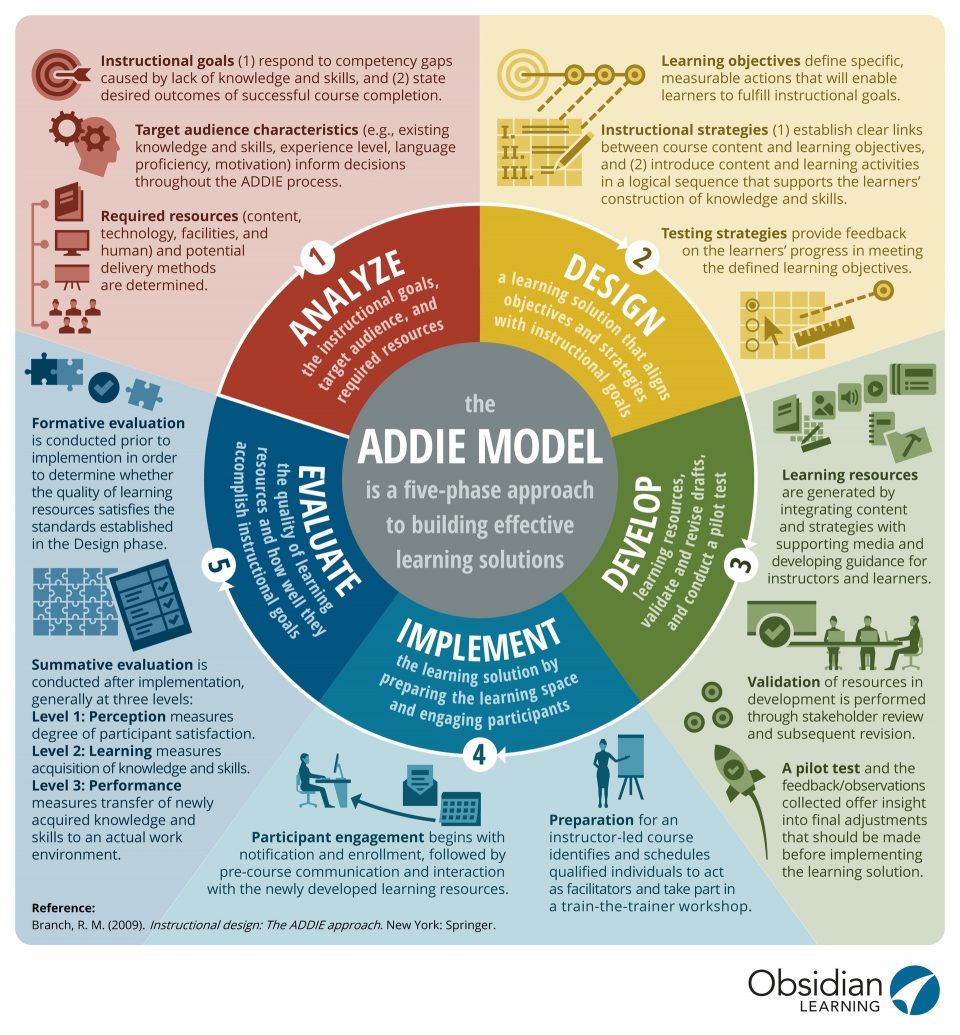ADDIE
Analysis - Design - Development - Implement - Evaluation
The most well known model is A-D-D-I-E. ADDIE is an abbreviation of the five steps the model advocates when creating a learning solution.
- Analyse – Consider what are the students’ needs and under what context will they be learning? What are the course goals?
- Design – Consider the course’s scope: what outcomes or objectives need to be achieved and what teaching strategies will be employed? What assessment strategy will be used?
- Develop – Course materials are developed and technology platforms identified and customised.
- Implement – Registration and enrolments are completed and the course is deployed and managed. Learning activities are completed by the students.
- Evaluate – The effectiveness of the course design, materials and activities are reviewed to determine how the course might be improved.

ADDIE Negatives
ADDIE has been used extensively but one criticism that emerges is that it is a very time-consuming model. Delays in one phase impact on the development time and costs.
For example, think of a university course that requires various levels of approval before it can be released. It often takes years before a new course is released. Hence, a different model is often advocated as a rival to ADDIE, the Successive Approximation Model (SAM).
Last modified: Monday, 18 November 2019, 3:50 PM